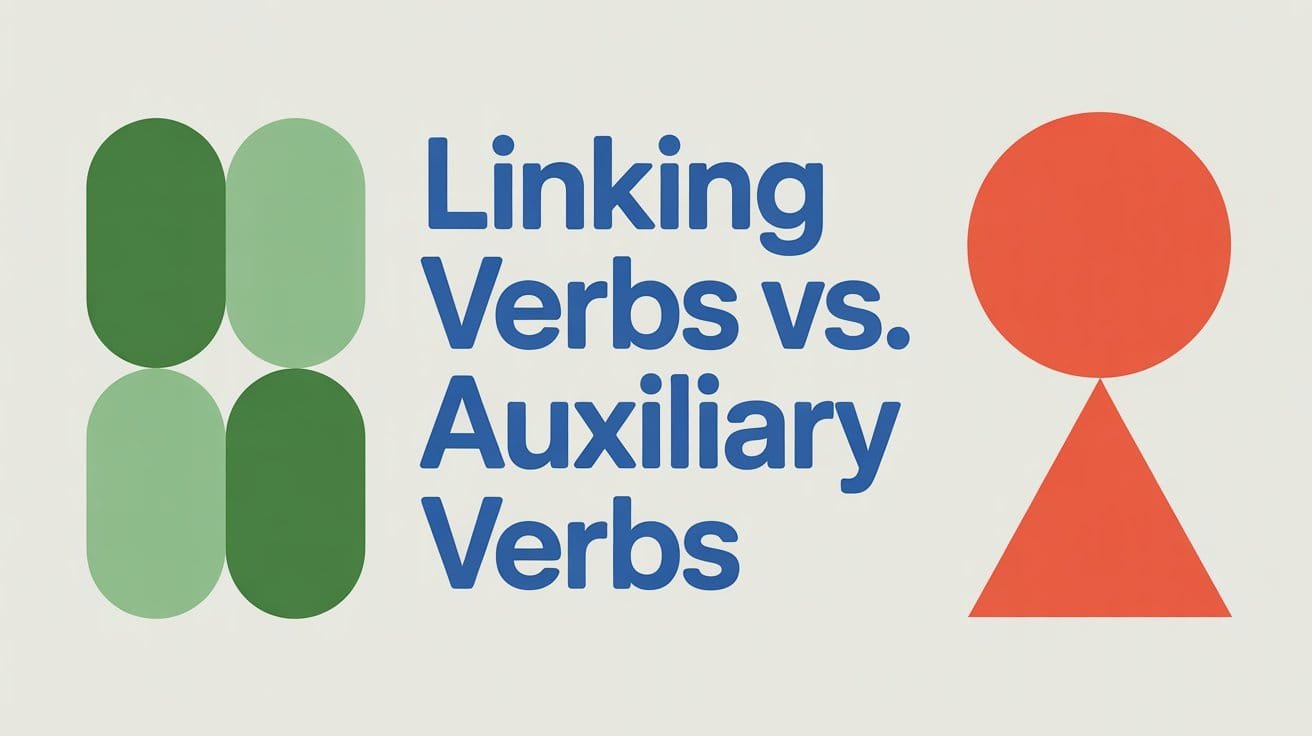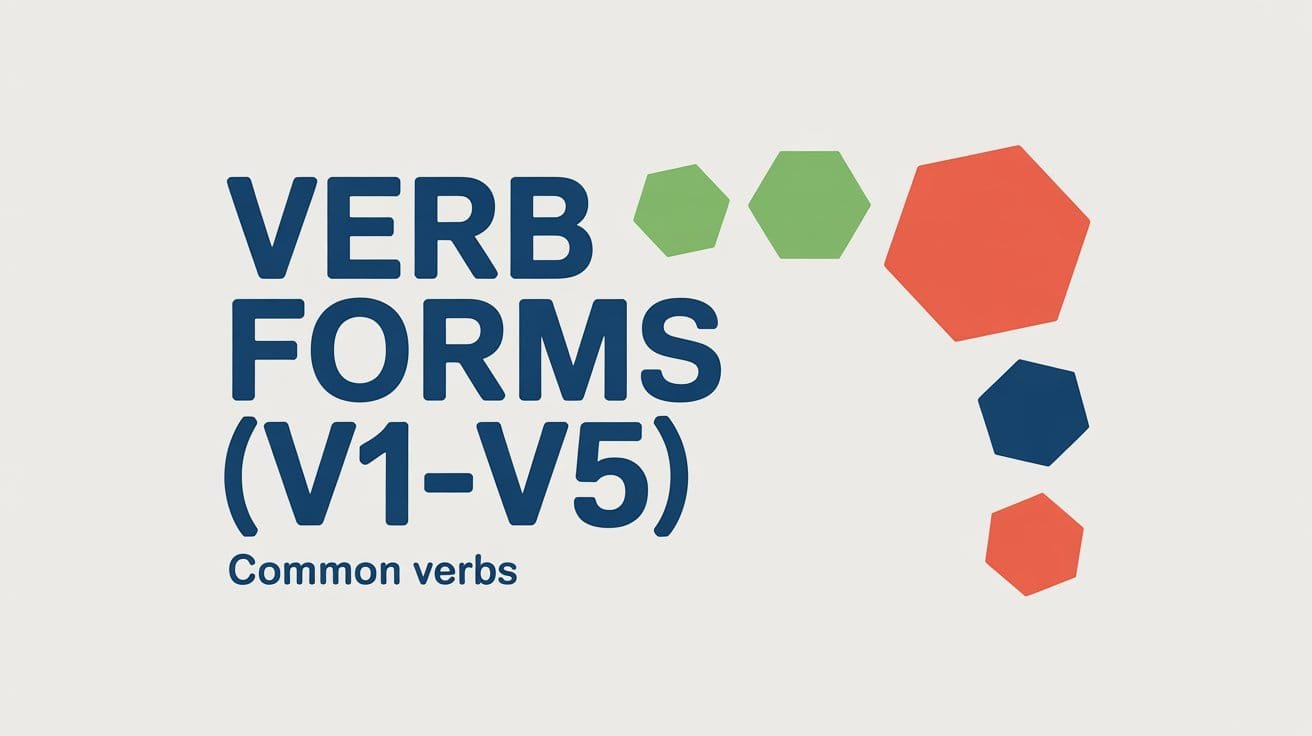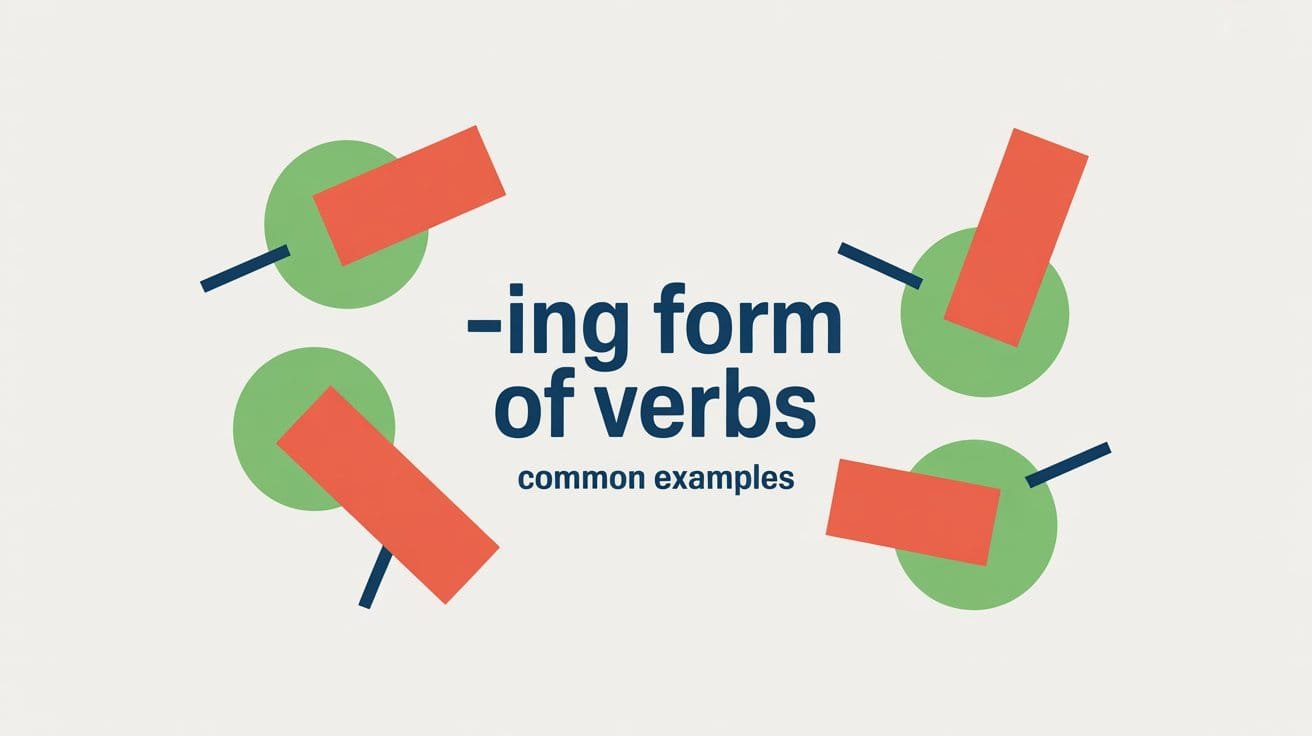Verbs can be confusing, especially when they look similar but serve very different purposes. Two of the most commonly mixed-up types are linking verbs and auxiliary verbs. While both help complete sentences, they function in unique ways and play distinct roles in English grammar.
Linking verbs connect the subject to a word that describes or identifies it, giving the sentence a sense of being or state. Auxiliary verbs, on the other hand, work with main verbs to form questions, negatives, tenses, or moods.
Understanding how linking and auxiliary verbs differ is essential for building clear, accurate, and natural sentences. This guide will help you tell them apart, see how they work in context, and avoid common mistakes.
What Are Linking Verbs?
Linking verbs act like an equal sign in a sentence. It connects the subject to a word that describes or renames it; often an adjective or a noun called the subject complement. Instead of showing action, linking verbs show a state of being or condition.
For example:
- She is a talented musician. (is links she to musician)
- The soup smells delicious. (smells links soup to delicious)
Some of the most common linking verbs include:
- be (am, is, are, was, were)
- become
- seem
- appear
- feel (in stative meaning)
- look (in stative meaning)
- remain
- stay
These verbs do not show what the subject does; they show what the subject is or feels instead.
What Are Auxiliary Verbs?
Auxiliary verbs, often called helping verbs, support the main verb to create complex tenses, questions, negatives, or passive structures. They do not carry the full meaning of the action by themselves but work together with another verb to complete the idea.
For example:
- She has finished her homework. (has helps form the present perfect)
- They are studying for the test. (are helps form the present continuous)
- Did you see the movie? (did helps form a question)
Some of the most common auxiliary verbs are:
- be (am, is, are, was, were, been)
- have (has, have, had)
- do (does, do, did)
Modal verbs are also considered auxiliaries because they help express mood or possibility:
- can, could, may, might, must, shall, should, will, would
Auxiliary verbs give a sentence structure and clarity about time, manner, or mood, and they are vital for forming correct English grammar.
Linking Verbs vs. Auxiliary Verbs: Key Differences
Although linking verbs and auxiliary verbs may look similar, especially since verbs like be can serve both roles, their functions are very different.
Linking verbs connect the subject to more information about its identity or state. They do not combine with another verb to show tense or mood. For example:
- He is tired. (linking he to tired)
Auxiliary verbs combine with a main verb to form a complete verb phrase. They help show tense, voice, questions, or negatives. For example:
- He is working late today. (auxiliary is + main verb working)
Quick Comparison Table
| Feature | Linking Verbs | Auxiliary Verbs |
|---|---|---|
| Main role | Connect subject to a complement | Support a main verb |
| Action involved | No action | Supports action described by main verb |
| Can stand alone? | Yes | No, needs a main verb |
| Examples | be, seem, become, appear | be, have, do, can, will, must |
Common Confusions and How to Avoid Them
It’s easy to get confused when verbs like be appear as both linking and auxiliary verbs. Here’s how to tell them apart:
- If the verb connects the subject directly to a complement (describing or renaming it), it’s working as a linking verb.
- He is a teacher. (linking he to teacher)
- If the verb is helping another main verb form a tense or structure, it’s working as an auxiliary verb.
- He is teaching today. (helping teaching as part of the present continuous)
Other tips to avoid confusion:
- Look for a subject complement (adjective or noun) → usually linking.
- Look for another verb following it → usually auxiliary.
- Remember that modal verbs (can, should, might) are always auxiliaries, never linking verbs.
When in doubt, check what the verb is linking or helping. This often gives away its true role in the sentence.
FAQs About Linking vs. Auxiliary Verbs
Is “be” a linking or auxiliary verb?
It can be both. As a linking verb, be connects the subject to a complement (He is happy). As an auxiliary, it helps form tenses or passives (He is working).
Can a verb be both linking and auxiliary?
Yes, especially verbs like be. Context decides its function. If it stands alone and links to a description, it’s linking. If it supports another verb, it’s auxiliary.
What about modal verbs?
Modal verbs (can, might, should, must) are a type of auxiliary verb. They help express mood, possibility, necessity, or ability.
How can I tell if a verb is linking or helping?
Ask yourself:
Is there a main verb after it? → helping (auxiliary)
Is it connecting the subject to a description? → linking



